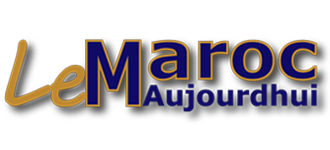Dernières Nouvelles
Page d'accueil
- Actualités locales, arabes et internationales
- Interviews Artistiques ou Culturelles/ Interviews d'artistes
- Les titres
- Sport
- Vidéos
- Célébrités
- Entrevues
- Affaires
- Mode
- Santé et Nutrition
- Vues & Analyses
- Presse
- Les infos les plus Lues
- Météo
- Evasion
- Autos
- Dessin animé
- Les Femmes à la Une
- Actu Stars & Personnalités
Sport
Culture
Business
Divertissement
Mode
Santé
Voyages et Evasion
Décor
How brain waves guide memory formation?

Brain regions that are key to learning
Tehran - FNA
Two brain regions that are key to learning -- the hippocampus and the prefrontal cortex -- use two different brain-wave frequencies to communicate as the brain learns to associate unrelated objects, researchers discovered.
Our brains generate a constant hum of activity: As neurons fire, they produce brain waves that oscillate at different frequencies. Long thought to be merely a byproduct of neuron activity, recent studies suggest that these waves may play a critical role in communication between different parts of the brain.
A new study from MIT neuroscientists adds to that evidence. The researchers found that two brain regions that are key to learning -- the hippocampus and the prefrontal cortex -- use two different brain-wave frequencies to communicate as the brain learns to associate unrelated objects. Whenever the brain correctly links the objects, the waves oscillate at a higher frequency, called "beta," and when the guess is incorrect, the waves oscillate at a lower "theta" frequency.
"It's like you're playing a computer game and you get a ding when you get it right, and a buzz when you get it wrong. These two areas of the brain are playing two different 'notes' for correct guesses and wrong guesses," says Earl Miller, the Picower Professor of Neuroscience, a member of MIT's Picower Institute for Learning and Memory, and senior author of a paper describing the findings in the Feb. 23 online edition of Nature Neuroscience.
Furthermore, these oscillations may reinforce the correct guesses while repressing the incorrect guesses, helping the brain learn new information, the researchers say.
Signaling right and wrong
Miller and lead author Scott Brincat, a research scientist at the Picower Institute, examined activity in the brain as it forms a type of memory called explicit memory -- memory for facts and events. This includes linkages between items such as names and faces, or between a location and an event that took place there.
During the learning task, animals were shown pairs of images and gradually learned, through trial and error, which pairs went together. Each correct response was signaled with a reward.
As the researchers recorded brain waves in the hippocampus and the prefrontal cortex during this task, they noticed that the waves occurred at different frequencies depending on whether the correct or incorrect response was given. When the guess was correct, the waves occurred in the beta frequency, about 9 to 16 hertz (cycles per second). When incorrect, the waves oscillated in the theta frequency, about 2 to 6 hertz.
Previous studies by MIT's Mark Bear, also a member of the Picower Institute, have found that stimulating neurons in brain slices at beta frequencies strengthens the connections between the neurons, while stimulating the neurons at theta frequencies weakens the connections.
Miller believes the same thing is happening during this learning task.
"When the animal guesses correctly, the brain hums at the correct answer note, and that frequency reinforces the strengthening of connections," he says. "When the animal guesses incorrectly, the 'wrong' buzzer buzzes, and that frequency is what weakens connections, so it's basically telling the brain to forget about what it just did."
The findings represent a major step in revealing how memories are formed, says Howard Eichenbaum, director of the Center for Memory and Brain at Boston University.
"This study offers a very specific, detailed story about the role of different directions of flow, who's sending information to whom, at what frequencies, and how that feedback contributes to memory formation," says Eichenbaum, who was not part of the research team.
The study also highlights the significance of brain waves in cognitive function, which has only recently been discovered by Miller and others.
"Brain waves had been ignored for decades in neuroscience. It's been thought of as the humming of a car engine," Miller says. "What we're discovering through this experiment and others is that these brain waves may be the infrastructure that supports neural communication."
Enhancing memory
The researchers are now investigating whether they can speed up learning by delivering noninvasive electrical stimulation that oscillates at beta frequencies when the correct answer is given and at theta frequencies when the incorrect answer is given. "The idea is that you make the correct guesses feel more correct to the brain, and the incorrect guesses feel more incorrect," Miller says.
This form of very low voltage electrical stimulation has already been approved for use in humans.
"This is a technique that people have used in humans, so if it works, it could potentially have clinical relevance for enhancing memory or treating neurological disorders," Brincat says.
GMT 13:07 2015 Mardi ,10 Mars
How independent women are shaping the travel industry?GMT 07:14 2015 Lundi ,09 Mars
What are the dos and dont’s of modern resumes?GMT 14:09 2015 Mardi ,24 Février
How long a person is likely to live?GMT 12:16 2015 Mardi ,24 Février
Can unemployment trigger personality changes?GMT 15:03 2015 Lundi ,23 Février
How CEO makes hiring decisions in 7 minutes?

GMT 13:07 2015 Mardi ,10 Mars
How independent women are shaping the travel industry?GMT 07:14 2015 Lundi ,09 Mars
What are the dos and dont’s of modern resumes?GMT 14:09 2015 Mardi ,24 Février
How long a person is likely to live?GMT 12:16 2015 Mardi ,24 Février
Can unemployment trigger personality changes?GMT 15:03 2015 Lundi ,23 Février
How CEO makes hiring decisions in 7 minutes?

Sources de grogne sociale
Mines et pétrole, richesses du Pérou
Lima - Maroc Aujourdhui
Les conflits sociaux autour de projets miniers et pétroliers s'intensifient au Pérou, provoquant l'inquiétude du gouvernement et des secteurs industriels qui craignent pour les investissements dans ce secteur-clé de l'économie
Paris-Roubaix
Les quatre clés de la 'reine'
Compiègne - Maroc Aujourdhui
Paris-Roubaix se joue dimanche au gré des 27 secteurs pavés qui parsèment les 253,5 kilomètres du parcours. Mais, pour le directeur de course Thierry Gouvenou, quatre d'entre eux sont des moments-clés: Troisvilles, Arenberg, Mons-en-Pévèle et le Carrefour de l'Arbre. .Calories contre beuveries
La bataille s'engage à Bruxelles
Bruxelles - Maroc Aujourdhui
Jouer l'atout minceur pour lutter contre beuveries et alcoolisme: le projet d'étiqueter les calories des bières, vins et whisky fait son retour en Europe, mais reste confronté à la résistance des pays viticoles et des lobbies. Le Parlement européen aBoss Bespoke : autopsie d’un sac
Casablanca - Le Maroc Aujourd’hui
« Est luxueux tout ce qui n’est pas indispensable mais délectable s’il est sensible à la grâce » affirmait l’économiste et écrivain Jean Castarède. Une définition qui sied parfaitement au monde des accessoires, et particulièrement des sacs, chouchous des maisons de mode. On a voulu en savoir plus sur la genèse de l'un de ces objets du désir. Jason Wu, le directeur artistique de Boss, nous a accompagnés. Durant vingt ans, de 1994 à 2013, les ventes mondiales de maroquinerie ont connu des hausses annuelles de 8 à 11%, soit plus du double que le reste du marché du luxe (1) et ce, malgré la crise. Outre une avidité à ouvrir ce qui est considéré comme l’une des portes d’entrée du luxe, la raison de cette croissance insolente était due à une offre grandissante. De la plus petite marque à la plusMaintained and developed by Arabs Today Group SAL.
All rights reserved to Arab Today Media Group 2025 ©
Maintained and developed by Arabs Today Group SAL.
All rights reserved to Arab Today Media Group 2025 ©



















Envoyer Vos Commentaires
Commentaire comme invité